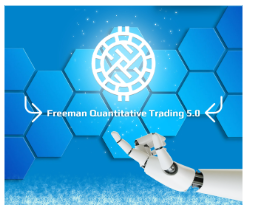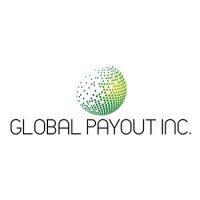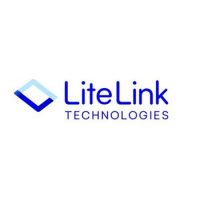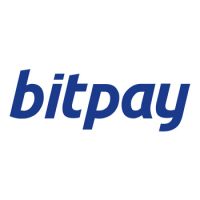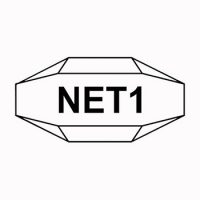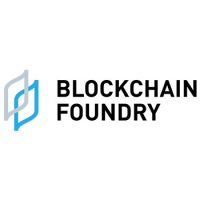Blockchain
Blocks & Headlines: Today in Blockchain – February 25, 2025 – Taraxa, DMG Blockchain, BGIN, Metal Blockchain, Parsiq

In the ever‐changing realm of blockchain and cryptocurrency, every day brings a fresh set of challenges, opportunities, and paradigm shifts that reshape our digital landscape. On February 25, 2025, the blockchain space is abuzz with developments that range from controversial performance metrics and bold infrastructure investments to IPO filings, strategic partnerships in digital banking, and innovative network solutions designed to address long‑standing blockchain challenges. This op‑ed–style daily briefing—Blocks & Headlines: Today in Blockchain—dives deep into the latest news, providing concise yet comprehensive coverage and insightful analysis of each story. As we explore these updates, we’ll discuss not only the facts but also the implications for blockchain, cryptocurrency, Web3, DeFi, and NFTs.
In today’s briefing, we focus on five key stories:
- A groundbreaking report by Taraxa claims that blockchain performance has been overstated by as much as 20 times.
- DMG Blockchain Solutions Inc. announces a memorandum of understanding (MOU) to purchase 10-megawatt data center infrastructure to boost its blockchain operations.
- BGIN Blockchain has filed for a USD 50-million IPO in the United States, marking a major milestone in its journey toward public listing.
- Bay Federal Credit Union has joined Metal Blockchain’s innovative banking initiative, signaling a new era for financial services leveraging distributed ledger technology.
- Parsiq introduces its reactive network aimed at solving persistent challenges within blockchain systems.
As we unpack these stories, we’ll not only outline what is happening today but also delve into the broader trends shaping the future of blockchain and cryptocurrency. Let’s begin by setting the stage with an introduction that outlines the key trends, followed by an in‑depth analysis of each story, and finally a conclusion that ties together the major takeaways.
I. Introduction: A New Era of Blockchain Disruption
The blockchain and cryptocurrency industries are at a pivotal crossroads. With the promise of decentralization, transparency, and efficiency, blockchain technology has captivated investors, developers, and regulators alike. Yet, as the technology matures, cracks are beginning to show in some of its early claims, while new initiatives drive the evolution of the ecosystem in unexpected directions. The convergence of innovative infrastructure investments, the drive for mainstream adoption via IPOs, and the rise of strategic partnerships across industries are fundamentally altering the competitive landscape.
Today’s headlines underscore several important themes:
- Scrutiny of Performance Claims: Recent studies, including one by Taraxa, suggest that the performance capabilities of blockchain platforms may have been grossly overestimated. This revelation forces stakeholders to reexamine metrics and expectations.
- Infrastructure as the Backbone of Growth: Major players like DMG Blockchain Solutions are betting big on data center investments to support the massive computing demands of blockchain networks. Such moves are not only about scaling operations but also about ensuring reliability and security.
- Capital Markets and Public Listings: The move by BGIN Blockchain to file for an IPO represents a growing trend where blockchain companies are seeking public capital to fuel their expansion. This reflects a maturation of the industry and a willingness of traditional investors to take on crypto-related ventures.
- Bridging Finance and Blockchain: As conventional financial institutions like Bay Federal Credit Union join forces with blockchain innovators such as Metal Blockchain, the lines between traditional banking and decentralized finance (DeFi) are becoming increasingly blurred.
- Addressing Technical Challenges: Innovations like Parsiq’s reactive network are designed to tackle persistent technical challenges that have plagued blockchain adoption, including scalability, latency, and network reliability.
These trends signal that blockchain is evolving from its experimental roots into a more mature, integrated, and scrutinized technology. With increased regulatory oversight and a growing demand for robust, transparent performance, the blockchain space is poised for a new era of innovation—one that is as much about accountability as it is about disruption.
II. Blockchain Performance Under the Microscope: The Taraxa Report
A. Unpacking the 20x Overstatement Claim
A recent report from Taraxa has sent shockwaves throughout the blockchain community by asserting that blockchain performance has been overstated by a factor of 20. According to the report, many of the performance metrics touted by blockchain projects over the past few years may have been based on overly optimistic assumptions or flawed methodologies. This revelation, as covered by Crypto.News, calls into question the scalability and efficiency claims that have been used to justify billions in investments and hype around decentralized applications.
The Taraxa report systematically analyzed data from various blockchain platforms, comparing real‑world performance with projected benchmarks. The findings suggest that, under realistic conditions, transaction speeds, throughput, and network latency are significantly lower than what was advertised. This discrepancy has major implications for projects that rely on high-speed, scalable solutions to support complex applications such as decentralized finance (DeFi), non‑fungible tokens (NFTs), and enterprise-level blockchain integrations.
B. The Implications for Stakeholders
For investors and developers, the Taraxa report is a call to exercise greater due diligence. Overstated performance metrics can lead to inflated valuations and misguided investment decisions. While the promise of blockchain remains intact, the industry must now contend with the reality that many platforms may not be as performant as initially claimed. This necessitates a reassessment of benchmarks and a move toward more rigorous, transparent testing protocols.
From an op‑ed perspective, this report serves as both a cautionary tale and an opportunity for maturation within the industry. On one hand, it exposes vulnerabilities in the marketing and technical validation of blockchain performance claims. On the other, it creates a pathway for more honest discussions about scalability and efficiency. In the long run, embracing realistic performance metrics can drive innovation and encourage the development of solutions that are both practical and scalable.
C. Expert Opinions and Future Outlook
Industry experts have reacted with a mix of skepticism and cautious optimism. Some view the Taraxa report as a necessary corrective that will ultimately benefit the blockchain ecosystem by setting more realistic expectations. Others warn that such revelations could dampen investor enthusiasm, at least in the short term. However, history has shown that periods of recalibration often lead to stronger, more sustainable growth in the technology sector.
As blockchain projects begin to address these performance gaps, we can expect to see increased investment in research and development aimed at overcoming the limitations identified by Taraxa. Whether through innovations in consensus algorithms, improvements in network architecture, or the integration of off-chain scaling solutions, the road ahead will require both technical ingenuity and a commitment to transparency.
Source: Crypto.News
III. DMG Blockchain Solutions Inc.: Investing in the Future with a 10-Megawatt Data Center
A. A Strategic Move Toward Scalability and Security
In a bold and strategic move, DMG Blockchain Solutions Inc. has announced a memorandum of understanding (MOU) to purchase a 10-megawatt data center infrastructure. This development, reported by GlobeNewswire, underscores the growing importance of robust, high-capacity data centers in the blockchain ecosystem. With the increasing demand for secure and scalable blockchain solutions, investments in infrastructure have become a critical component of long‑term success.
For DMG Blockchain Solutions, this move represents not only an expansion of physical assets but also a commitment to enhancing the reliability and performance of its blockchain network. Data centers are the backbone of any digital operation, and for blockchain applications that require constant, high-speed data processing, having dedicated infrastructure can make all the difference. The new facility is expected to support a wide range of blockchain applications, from financial services to supply chain management, by providing the necessary computational power and security.
B. The Broader Impact on the Blockchain Ecosystem
Investments like DMG’s signal a maturing market where infrastructure is as critical as the underlying blockchain protocols. In the early days of blockchain, many projects relied on decentralized, ad hoc solutions for hosting nodes and processing transactions. Today, however, the demand for enterprise-grade performance and security has led companies to invest heavily in centralized infrastructure that supports decentralized applications.
This trend is particularly significant for applications in sectors such as finance, healthcare, and logistics, where data security and uptime are non-negotiable. By investing in a high-capacity data center, DMG Blockchain Solutions is positioning itself as a reliable partner for businesses looking to adopt blockchain technology on a large scale. The move also reflects a broader industry trend where hybrid models—combining decentralized protocols with centralized infrastructure—are becoming increasingly popular.
C. Strategic Partnerships and Future Prospects
The announcement by DMG Blockchain Solutions is likely to have ripple effects across the industry. Competitors may feel compelled to bolster their own infrastructure investments, leading to a wave of consolidation and standardization within the sector. Moreover, strategic partnerships with data center providers could become a key differentiator for blockchain projects, offering a competitive edge in terms of performance, security, and scalability.
From an op‑ed standpoint, DMG’s initiative is a forward‑thinking strategy that acknowledges the realities of modern blockchain applications. The future of blockchain is not solely about cryptographic algorithms and decentralized consensus—it’s also about creating a robust ecosystem where technology can thrive under real‑world conditions. As more companies follow DMG’s lead, the blockchain landscape is likely to evolve toward a more hybridized model that leverages both decentralization and centralized infrastructure for optimal performance.
Source: GlobeNewswire
IV. BGIN Blockchain’s IPO Ambitions: A $50 Million Gamble
A. The IPO Filing: A Milestone for Blockchain Companies
In a move that highlights the increasing convergence between blockchain technology and traditional capital markets, BGIN Blockchain has filed for an initial public offering (IPO) worth USD 50 million in the United States. This news, covered by The Paypers, marks a significant milestone for BGIN and the broader blockchain community. The decision to go public is a clear signal that blockchain companies are beginning to embrace the scrutiny and opportunities of the public markets.
For BGIN Blockchain, the IPO represents a strategic effort to raise capital that will fuel further innovation and expansion. The funds raised through the public offering are expected to be used for research and development, scaling operations, and enhancing the company’s market presence. In many ways, BGIN’s move reflects a broader trend of blockchain companies seeking legitimacy and growth through public funding, a path once considered too risky for the nascent industry.
B. Implications for Investors and the Market
The IPO filing is a double-edged sword. On one hand, it offers investors the opportunity to participate in the growth of a blockchain company at a critical juncture, potentially reaping significant rewards if the company’s vision materializes. On the other hand, public markets demand a level of transparency, governance, and accountability that many blockchain startups have yet to fully embrace. The success of BGIN’s IPO will depend on its ability to balance the innovative, agile spirit of the blockchain space with the rigorous demands of public market investors.
From an op‑ed perspective, the decision to file for an IPO is both a bold gamble and a natural evolution. It suggests that blockchain companies are ready to step out of the shadows and into the mainstream financial arena. This transition, however, is not without its challenges. The heightened scrutiny and regulatory oversight that come with public listings will force companies like BGIN to elevate their operational standards and risk management practices.
C. The Future of Blockchain IPOs
Looking ahead, the trend of blockchain companies entering public markets is likely to accelerate. As more projects mature and demonstrate consistent performance, public investors will become increasingly comfortable with the sector. BGIN’s IPO could serve as a bellwether, setting the stage for a wave of similar filings that will bring much-needed capital and legitimacy to the blockchain ecosystem. In this context, the move by BGIN Blockchain is not merely an isolated event—it is part of a larger narrative about the integration of blockchain technology into the global financial system.
Source: The Paypers
V. Banking Innovation on the Blockchain: Bay Federal Credit Union and Metal Blockchain
A. A New Era of Digital Banking
In an exciting development at the intersection of traditional finance and blockchain innovation, Bay Federal Credit Union has recently joined Metal Blockchain’s initiative to revolutionize digital banking. As reported by Newswire, this partnership is aimed at integrating blockchain technology into everyday banking services, offering enhanced security, transparency, and efficiency. For credit unions and financial institutions, blockchain represents a transformative tool that can streamline operations and provide a competitive edge in an increasingly digital world.
The collaboration between Bay Federal Credit Union and Metal Blockchain is particularly noteworthy because it underscores a growing trend: traditional financial institutions are not only recognizing the potential of blockchain but are actively seeking to harness its capabilities. By leveraging Metal Blockchain’s platform, Bay Federal Credit Union aims to offer its members faster transaction processing, improved fraud detection, and more personalized financial services. This partnership is a clear indication that the future of banking lies in the convergence of conventional financial expertise and cutting‑edge blockchain technology.
B. Transforming Customer Experiences
For consumers, the benefits of blockchain-enabled banking are manifold. Faster settlement times, lower transaction fees, and greater transparency in financial transactions are just a few of the advantages that digital banking solutions can offer. In a world where data breaches and fraudulent activities are increasingly common, the immutable and decentralized nature of blockchain can provide a significant boost to consumer trust and security.
From an op‑ed standpoint, the integration of blockchain into the banking sector represents a paradigm shift. It is not just about modernizing outdated systems—it is about rethinking how financial services are delivered and experienced. As more institutions follow Bay Federal Credit Union’s lead, we can expect a broader transformation in the financial landscape, where blockchain technology serves as a catalyst for innovation and customer-centric solutions.
C. Broader Industry Implications
The partnership between Bay Federal Credit Union and Metal Blockchain has implications that extend far beyond a single institution. It highlights the potential for collaboration between traditional banks and blockchain innovators, setting a precedent for future partnerships. Such alliances are likely to drive industry-wide standards for security, efficiency, and interoperability in digital finance. In the coming years, as the lines between traditional finance and blockchain blur, these collaborative models will play a crucial role in shaping the future of financial services.
Source: Newswire
VI. Parsiq’s Reactive Network: Solving Persistent Blockchain Challenges
A. Addressing Long‑Standing Technical Hurdles
One of the most persistent challenges in the blockchain space has been the difficulty of managing network congestion, latency issues, and other performance bottlenecks that impede scalability. Enter Parsiq, a project that is garnering attention for its innovative reactive network designed specifically to address these issues. As reported by CoinTrust, Parsiq’s solution leverages real‑time data and adaptive protocols to react to changing network conditions and mitigate performance issues before they become critical.
Parsiq’s reactive network is built on the principle of continuous monitoring and dynamic adjustment. By integrating advanced algorithms and predictive analytics, the system can identify anomalies, adjust transaction routing, and optimize network throughput. This proactive approach is a significant departure from traditional, static blockchain architectures that often struggle to keep pace with increasing demand and complex use cases.
B. The Potential to Transform Blockchain Performance
The introduction of a reactive network by Parsiq has far‑reaching implications for the blockchain industry. For developers and enterprises, improved network performance means more reliable platforms for building decentralized applications (dApps), launching DeFi projects, and trading NFTs. Enhanced scalability and reduced latency can unlock new possibilities for blockchain use cases that were previously hindered by technical limitations.
From an op‑ed perspective, Parsiq’s innovative approach represents a critical evolution in blockchain technology. It is an acknowledgement that the early days of blockchain development—characterized by rigid, one‑size‑fits‑all solutions—must give way to more adaptive, intelligent systems capable of responding in real time to the complexities of modern networks. This breakthrough could be the catalyst for a new wave of blockchain adoption, as the technology becomes more practical and efficient for mainstream applications.
C. Looking Ahead: Integration and Collaboration
The successful implementation of reactive networks like Parsiq’s will likely spur further innovation across the industry. As developers integrate these advanced solutions into their blockchain platforms, we can expect a new standard for performance and reliability. Moreover, collaborations between technology providers and blockchain projects will become increasingly important as the ecosystem evolves to meet the demands of a digital-first world.
Source: CoinTrust
VII. Synthesis: Key Trends Shaping Today’s Blockchain Landscape
As we reflect on the diverse array of news stories covered in today’s briefing, several overarching trends become evident. These trends not only define the current state of the blockchain and cryptocurrency space but also hint at where the industry is headed in the coming years.
A. Realism in Performance Metrics
The revelations from the Taraxa report serve as a reminder that the blockchain industry must embrace realistic performance assessments. Overstated metrics may have driven early hype, but sustainable growth depends on transparency and continual improvement. As projects recalibrate their expectations, stakeholders will benefit from more accurate benchmarks that pave the way for genuine innovation.
B. Infrastructure as the Cornerstone of Scalability
Investments in data center infrastructure, such as DMG Blockchain Solutions Inc.’s 10-megawatt facility, highlight the importance of building a robust backbone for blockchain operations. In a landscape where digital transactions and decentralized applications demand relentless performance and security, such infrastructure investments are not optional—they are essential.
C. The Growing Role of Public Markets
BGIN Blockchain’s IPO filing underscores a broader trend of blockchain companies seeking legitimacy through public listings. As the industry matures, access to traditional capital markets will be crucial for funding innovation and driving long‑term growth. This trend represents a key milestone in the journey toward mainstream adoption of blockchain technology.
D. Strategic Partnerships Across Sectors
The collaboration between Bay Federal Credit Union and Metal Blockchain exemplifies the merging of traditional financial institutions with blockchain innovators. Such partnerships are vital for driving the evolution of digital banking and for bridging the gap between established financial practices and disruptive new technologies.
E. Technological Innovation to Overcome Legacy Challenges
Finally, innovations like Parsiq’s reactive network demonstrate the industry’s commitment to overcoming long‑standing technical hurdles. By developing adaptive, real‑time solutions, blockchain projects are setting the stage for a new era of performance and scalability that could unlock previously unimaginable use cases.
VIII. In-Depth Analysis: Implications for Blockchain, Cryptocurrency, Web3, DeFi, and NFTs
A. The Future of Blockchain Performance
The realization that blockchain performance metrics may have been overstated by up to 20 times is a wake-up call for the entire industry. While this revelation might cause short-term skepticism, it also opens the door to a more honest and innovative future. Developers will be encouraged to focus on realistic performance improvements and to invest in technologies that genuinely enhance scalability and throughput. For users and investors alike, more accurate benchmarks will lead to better decision‑making and more sustainable growth.
B. Infrastructure Investments and the Digital Backbone
As companies like DMG Blockchain Solutions Inc. continue to invest in high‑capacity data centers, the industry is poised to experience a transformation in how blockchain networks are built and maintained. These investments are crucial for supporting the next generation of decentralized applications, from enterprise‑level solutions to everyday financial transactions. For blockchain projects, the integration of state‑of‑the‑art infrastructure is a critical factor in gaining user trust and achieving global scalability.
C. Public Offerings and the Mainstreaming of Blockchain
BGIN Blockchain’s IPO filing represents a significant milestone not only for the company but for the entire blockchain sector. As more blockchain projects seek public listings, we can expect increased transparency, stricter governance standards, and a more robust regulatory environment. These developments will drive long‑term investor confidence and facilitate the infusion of traditional capital into the blockchain ecosystem. The move toward public markets signals that blockchain is no longer a fringe technology but a mainstream asset class with real economic potential.
D. Bridging Traditional Finance and Blockchain
The partnership between Bay Federal Credit Union and Metal Blockchain is emblematic of the growing synergy between traditional finance and blockchain technology. By integrating blockchain into everyday banking, financial institutions can offer enhanced security, reduced costs, and a more personalized customer experience. This fusion of conventional and decentralized systems is likely to accelerate the adoption of blockchain solutions across the financial sector, ultimately transforming the way money moves and how financial services are delivered.
E. Overcoming Technical Challenges with Innovation
Parsiq’s reactive network is a beacon of innovation in a field that has long struggled with issues of scalability and network performance. By employing adaptive algorithms and real‑time monitoring, Parsiq’s solution could set a new standard for blockchain efficiency. This breakthrough has far‑reaching implications for the development of DeFi platforms, NFT marketplaces, and other applications that require seamless, high‑speed transactions. As the industry continues to evolve, overcoming technical challenges will be paramount to unlocking the full potential of blockchain technology.
IX. Editorial Perspective: Reflections on Today’s Blockchain Developments
In today’s rapidly shifting blockchain landscape, one thing is clear: innovation is accelerating at an unprecedented pace, but with it comes the need for accountability, transparency, and realistic expectations. The Taraxa report’s sobering findings force us to confront the limitations of early hype, while investments in infrastructure and strategic partnerships highlight the industry’s commitment to building a more robust and sustainable future.
From an op‑ed perspective, the events of today encapsulate the dual nature of the blockchain revolution. On one hand, there is enormous potential for transformative change—whether it’s through the democratization of finance, the creation of decentralized digital economies, or the empowerment of individual creators through NFTs and Web3 applications. On the other hand, the challenges are real: overhyped performance metrics, scalability issues, and the need to bridge the gap between innovative technology and traditional financial systems.
What stands out most is the resilience of the blockchain community. Even as studies expose weaknesses, visionary projects are already underway to address them. The proactive measures taken by companies such as DMG Blockchain Solutions and Parsiq, along with bold moves like BGIN’s IPO filing and strategic partnerships in digital banking, signal that the industry is ready to evolve, adapt, and overcome obstacles. It is this relentless pursuit of improvement that will ultimately define the next chapter of blockchain history.
X. Strategic Recommendations for Industry Stakeholders
In light of the insights gleaned from today’s developments, here are several strategic recommendations for key players in the blockchain and cryptocurrency space:
A. For Blockchain Developers and Technologists
- Prioritize Real‑World Performance Testing: Embrace transparent, rigorous benchmarking to ensure that performance claims align with real‑world conditions.
- Invest in Scalable Infrastructure: Leverage high‑capacity data centers and cloud solutions to support growing network demands.
- Adopt Adaptive Network Solutions: Integrate reactive technologies that can dynamically address latency and congestion challenges.
B. For Investors and Financial Institutions
- Exercise Due Diligence: Scrutinize performance metrics and evaluate the sustainability of blockchain projects before committing capital.
- Embrace Hybrid Models: Support initiatives that combine decentralized technology with centralized infrastructure for enhanced reliability.
- Seek Strategic Partnerships: Collaborate with innovative fintech and blockchain startups to diversify portfolios and foster long‑term growth.
C. For Regulatory Bodies and Industry Consortia
- Develop Transparent Standards: Establish industry benchmarks for performance and scalability to guide investor expectations.
- Encourage Cross‑Sector Collaboration: Foster partnerships between traditional financial institutions and blockchain innovators to create comprehensive digital ecosystems.
- Monitor Technological Advancements: Stay abreast of innovations such as reactive networks and infrastructure investments to update regulatory frameworks accordingly.
D. For Blockchain Companies
- Communicate Transparently: Share realistic performance data with stakeholders and adjust expectations based on empirical evidence.
- Prepare for Public Markets: For companies like BGIN Blockchain, embrace the rigors of public disclosure and governance to build long‑term investor confidence.
- Focus on Security and Scalability: Prioritize the integration of robust security protocols and scalable network solutions to address ongoing industry challenges.
XI. The Broader Implications for Blockchain, Cryptocurrency, and Digital Innovation
The stories and trends discussed today have far‑reaching implications beyond the immediate blockchain community. They touch on fundamental questions about how technology shapes our economies, redefines financial systems, and transforms the way we interact with data. In an era where digital assets, decentralized finance, and NFT marketplaces are becoming mainstream, the need for robust, scalable, and transparent blockchain technology has never been greater.
A. Impact on the Global Financial Ecosystem
The convergence of traditional finance and blockchain technology is leading to the creation of hybrid financial systems that combine the best aspects of both worlds. Initiatives such as the partnership between Bay Federal Credit Union and Metal Blockchain illustrate how established financial institutions are beginning to integrate decentralized solutions into their operations. This shift not only enhances security and efficiency but also paves the way for a more inclusive financial landscape where underserved communities can access cutting‑edge digital services.
B. Enabling the Next Generation of Digital Applications
Innovations like Parsiq’s reactive network are key to unlocking new use cases for blockchain technology. From powering next‑generation DeFi platforms to facilitating high‑volume NFT marketplaces and Web3 applications, the technical breakthroughs we see today are the building blocks for tomorrow’s digital ecosystems. As blockchain performance becomes more reliable and scalable, developers will have the freedom to experiment with complex, high‑value applications that were previously beyond reach.
C. Fostering a Culture of Innovation and Accountability
The recalibration of performance expectations, as highlighted by the Taraxa report, underscores the importance of fostering a culture where innovation is balanced with accountability. The blockchain industry’s ability to self‐correct and evolve is one of its greatest strengths. By embracing realistic benchmarks and investing in infrastructure and technology that truly deliver, the community can ensure that the promises of decentralization and digital transformation are realized in a sustainable manner.
XII. Conclusion: Today’s Major Takeaways and the Road Ahead
As we bring today’s blockchain briefing to a close, the landscape appears both challenging and filled with promise. The Taraxa report reminds us that not all that glitters is gold, as overhyped performance metrics have long masked the true state of blockchain technology. However, this moment of reckoning is also an opportunity—a chance for the industry to recalibrate, invest in robust infrastructure, and innovate with a renewed commitment to transparency and performance.
Key takeaways from today’s headlines include:
- Realistic Assessments: The Taraxa report’s findings compel us to reassess performance claims and adopt more rigorous, realistic benchmarks.
- Infrastructure Investments: DMG Blockchain Solutions Inc.’s significant investment in data center infrastructure illustrates that the backbone of blockchain success lies in reliable, scalable technology.
- Mainstream Integration: BGIN Blockchain’s IPO filing and the collaboration between Bay Federal Credit Union and Metal Blockchain signal a growing acceptance of blockchain within mainstream financial systems.
- Innovative Solutions: Initiatives like Parsiq’s reactive network offer hope for overcoming longstanding technical challenges, paving the way for a more efficient and scalable blockchain ecosystem.
In our view, the future of blockchain and cryptocurrency will be shaped by those who are willing to embrace both the potential and the limitations of the technology. The challenges we face today—be they technical, financial, or regulatory—are not insurmountable. Instead, they provide a roadmap for a more mature and robust digital ecosystem that can support a wide array of innovative applications.
As investors, developers, regulators, and end‑users continue to navigate this dynamic landscape, the emphasis must be on collaboration, transparency, and continuous improvement. The decisions made today will set the stage for the blockchain breakthroughs of tomorrow. With a clear-eyed view of both the challenges and the opportunities, we can build a future where blockchain technology not only transforms industries but also delivers tangible value to society at large.
Thank you for joining us for this in‑depth exploration of today’s blockchain news. As the industry evolves, we remain committed to providing you with timely, insightful analysis and thought‑provoking commentary. Stay tuned for more updates and in‑depth briefings as we continue to navigate the exciting world of blockchain and cryptocurrency together.
XIII. Final Thoughts: Embracing the Future of Blockchain
In wrapping up today’s briefing, it is worth reflecting on the broader implications of the developments we’ve discussed. The blockchain industry is at a crossroads—facing the dual pressures of overcoming legacy challenges and seizing new opportunities. While the revelations about overstated performance serve as a reminder of the work that remains, the proactive investments and innovative solutions announced today provide a clear path forward.
From the strategic infrastructure investments by DMG Blockchain Solutions Inc. to the bold IPO ambitions of BGIN Blockchain, and from the transformative partnerships in digital banking to the groundbreaking technological advances of Parsiq, the blockchain space is evolving at an unprecedented pace. This evolution is not without its risks, but it is also filled with immense promise.
The road ahead will require all stakeholders—developers, investors, financial institutions, and regulators—to work in concert to address the challenges and harness the opportunities presented by this rapidly evolving technology. By fostering a culture of collaboration and accountability, the blockchain community can ensure that the innovations of today lay the foundation for a more secure, efficient, and inclusive digital future.
As we look to tomorrow, one thing is clear: blockchain is not a passing trend but a transformative force that will continue to shape the global economy, redefine financial systems, and empower individuals in ways we are only beginning to imagine. The journey is just beginning, and while the path may be fraught with challenges, the potential rewards are immense.
Thank you for reading this edition of Blocks & Headlines: Today in Blockchain. We invite you to join us again tomorrow as we continue to track the latest trends, analyze key developments, and provide in‑depth commentary on the dynamic world of blockchain and cryptocurrency.
The post Blocks & Headlines: Today in Blockchain – February 25, 2025 – Taraxa, DMG Blockchain, BGIN, Metal Blockchain, Parsiq appeared first on News, Events, Advertising Options.
Blockchain
From Onboarding to Settlement in Minutes: TransFi Launches BizPay to Redefine Global Business Payments

TransFi
Blockchain
Blocks & Headlines: Today in Blockchain – May 22, 2025

The blockchain universe never sleeps. From pioneering cross-border payment systems in Central America to city-wide crypto strategies in New York City, today’s headlines reveal an industry maturing at breakneck speed. In this edition of Blocks & Headlines, we explore five landmark developments:
-
Guatemala’s Banco Industrial integrates blockchain for seamless cross-border remittances.
-
NYC Mayor’s Office unveils a comprehensive crypto and blockchain roadmap.
-
OSR Holdings, BCM Europe & Taekwondo Cooperative sign an MOU to launch the OSRH token.
-
Bybit’s “Chicken Trader” livestream—crypto meets poultry in the world’s first poultry-powered trading showdown.
-
FIFA taps Avalanche to build a dedicated blockchain for its NFT platform.
These stories underscore three key trends reshaping the ecosystem:
-
Institutional Adoption & Regulation: From national banks to municipal governments, legacy institutions are embracing decentralized technologies.
-
Tokenization & Community Engagement: Strategic partnerships are launching specialized tokens that bridge niche communities with global markets.
-
Innovative Use Cases: Whether gaming, entertainment, or live-stream events, blockchain’s versatility spawns ever-more creative applications.
Join us as we unpack the implications, weigh the opportunities, and forecast where these trajectories might lead.
1. Guatemala’s Largest Bank Integrates Blockchain for Cross-Border Payments
What Happened
Guatemala’s Banco Industrial, the country’s biggest financial institution, announced the deployment of a private‐permissioned blockchain network to streamline remittances from the U.S. into Guatemala City and beyond. The solution reduces settlement times from days to minutes, cuts fees by up to 60 %, and offers real-time traceability for senders and receivers.
Source: Cointelegraph
Analysis & Commentary
-
Financial Inclusion Boost: Remittances account for over 12 % of Guatemala’s GDP. By minimizing friction and cost, blockchain integration will extend financial services to remote communities reliant on diaspora funds.
-
Risk & Compliance: Permissioned networks allow Banco Industrial to retain AML/KYC controls, mitigating concerns around illicit flows. This hybrid approach demonstrates that enterprise blockchain can balance decentralization with regulatory rigor.
-
Regional Ripple Effects: Neighboring Central American banks are watching closely. Should Guatemala’s pilot succeed, we can expect a domino effect across El Salvador, Honduras, and Costa Rica—each seeking to capitalize on faster, cheaper cross-border rails.
Implications
Legacy banks worldwide should view this as a blueprint: private blockchains can coexist with existing compliance frameworks while delivering transformative user benefits. Early movers will capture remittance market share and cultivate fintech partnerships across the Latin American corridor.
2. NYC Mayor Unveils Ambitious Crypto & Blockchain Agenda
What Happened
New York City Mayor Eric Adams detailed his administration’s multi-pronged strategy to make NYC a global crypto hub. Key initiatives include:
-
A regulatory sandbox for crypto startups to pilot DeFi, NFTs, and token-based fundraising under city supervision.
-
Partnerships with CUNY and Columbia University for blockchain research and talent development.
-
Deployment of a blockchain-based public record system for land titles and business registrations.
Source: GovTech
Analysis & Commentary
-
Regulatory Harmony vs. Overreach: By offering a controlled sandbox rather than blanket deregulation, NYC signals a nuanced stance—encouraging innovation without sacrificing consumer protection.
-
Talent Pipeline: Academic partnerships aim to remedy the talent shortage plaguing blockchain firms. Local graduates trained in distributed ledger technologies (DLT) will feed startups, financial institutions, and government agencies.
-
Public Services on Chain: Land registries and business filings on blockchain promise greater transparency and fraud reduction. If scaled effectively, NYC could set a global standard for government-blockchain integration.
Implications
Other major cities—London, Singapore, Dubai—will feel pressure to match NYC’s playbook. Municipal leaders should prioritize sandbox frameworks and academia-industry liaisons to nurture homegrown crypto ecosystems.
3. OSR Holdings, BCM Europe & Taekwondo Cooperative Launch OSRH Token
What Happened
OSR Holdings, BCM Europe, and the Taekwondo Cooperative signed a strategic Memorandum of Understanding to co-develop the OSRH token, a blockchain-based digital asset aimed at supporting global Taekwondo practitioners. Features include:
-
Membership Rewards: Tokens earned through event participation, coaching certifications, and tournament wins.
-
Decentralized Governance: Athletes vote on sponsorship allocations and rule-change proposals via on-chain ballots.
-
Marketplace Integration: A dedicated NFT marketplace for Taekwondo memorabilia, from digital belts to highlight reels.
Source: PR Newswire
Analysis & Commentary
-
Niche Tokenization: OSRH token exemplifies the power of community-focused tokens. By aligning incentives with passion points—training, competition, governance—stakeholders gain ownership and engagement.
-
Governance Innovation: Athlete-driven decision-making on sponsorship and funding disrupts top-down federation models. This could democratize sports governance across disciplines.
-
Commercial Ecosystem: The NFT marketplace offers monetization channels for athletes and federations alike. Strategic royalties on secondary sales ensure sustainable funding.
Implications
Other sports federations and niche communities should explore token models that blend rewards, governance, and commerce. Successful launches will hinge on clear utility, user education, and regulatory compliance in key jurisdictions.
4. Bybit Presents “Chicken Trader”: The World’s First Poultry-Powered Trading Showdown
What Happened
Cryptocurrency exchange Bybit debuted “Chicken Trader,” a live-streamed event where two contestants trade crypto pairs—and manage live chickens—to earn “Egg Points.” Viewers can stake on their favorite trader, earning NFTs and token rewards based on performance.
Source: PR Newswire
Analysis & Commentary
-
Gamification Meets DeFi: Chicken Trader’s fusion of live-stream engagement, staking mechanics, and NFTs exemplifies Web3’s playful ethos—turning trading into interactive entertainment.
-
User Acquisition Strategy: Bybit gamified acquisition funnels, leveraging viral social content to onboard nontraditional crypto audiences intrigued by the novelty factor.
-
Regulatory Tightrope: Combining staking with competition and livestock raises jurisdictional questions around gambling, securities, and animal welfare. Bybit must navigate diverse regulations to scale globally.
Implications
Other exchanges will replicate gamified formats to differentiate UX and grow communities. Yet long-term viability demands balancing flashy live-events with rigorous compliance, sustainable tokenomics, and authentic value for participants.
5. FIFA Taps Avalanche to Power Its NFT Platform
What Happened
Global soccer body FIFA selected the Avalanche blockchain to launch its official NFT marketplace, featuring digital collectibles—from World Cup highlights to player-card packs. Avalanche’s high throughput and low fees were cited as decisive factors.
Source: TradingView (via Cointelegraph)
Analysis & Commentary
-
Scalability & Sustainability: Avalanche’s consensus mechanism delivers sub-second finality and carbon-offset commitments, aligning with FIFA’s environmental pledges.
-
Fan Engagement: Tokenized highlights and limited-edition digital memorabilia expand revenue streams beyond broadcast rights, offering fans verifiable ownership and collectible provenance.
-
Interoperability: Avalanche’s growing DeFi ecosystem enables future integrations—staking fan tokens, launching prediction-market games, or embedding NFT rewards in FIFA’s mobile apps.
Implications
Major sports leagues and entertainment brands eyeing NFT forays will scrutinize Avalanche’s performance under FIFA’s global load. Blockchain platforms must prove they can handle spikes during marquee events—kickoff times, finals, transfer windows—while preserving UX and sustainability goals.
Conclusion
Today’s Blocks & Headlines illustrate blockchain’s multifaceted evolution:
-
Legacy institutions like banks and city governments are unlocking new efficiencies and transparency through private and public DLT networks.
-
Community-driven tokens are redefining governance and monetization in sports and niche domains.
-
Innovative engagement—from poultry-fueled trading spectacles to global soccer NFTs—demonstrates blockchain’s capacity for gamification, fan loyalty, and novel revenue models.
Yet with opportunity comes responsibility: scalable architectures must coexist with robust compliance; token economies require thoughtful design to sustain value; and regulators, academia, and industry must collaborate to craft frameworks that balance innovation with consumer protection.
As blockchain weaves deeper into finance, governance, entertainment, and sports, stakeholders who embrace strategic partnerships, prioritize user education, and invest in resilient infrastructures will lead the charge into Web3’s next frontier.
The post Blocks & Headlines: Today in Blockchain – May 22, 2025 appeared first on News, Events, Advertising Options.
Blockchain
Freeman Quantitative Trading(FQAI) 5.0 Is Coming—Ushering in a New Wave of Intelligent Investing
-

 Blockchain7 days ago
Blockchain7 days agoBlocks & Headlines: Today in Blockchain – May 16, 2025
-

 Blockchain Press Releases5 days ago
Blockchain Press Releases5 days agoCoinW Unveils Industry-First Futures Protection Program:Instant Refunds Designed to Safeguard Traders
-

 Blockchain4 days ago
Blockchain4 days agoBlocks & Headlines: Today in Blockchain – May 19, 2025 | DoubleZero, Toobit, Story Protocol, Marco Polo, Argo Blockchain
-

 Blockchain Press Releases2 days ago
Blockchain Press Releases2 days agoOnRe, Backed by Ethena, Solana Ventures, and RockawayX Launches Structured Yield Product Combining Real-World Stability and On-Chain Upside
-

 Blockchain Press Releases3 days ago
Blockchain Press Releases3 days agoHTX Unveils Finalists for $6M Mars Program Special Edition, Space Journey Selection Enters Final Phase
-

 Blockchain Press Releases1 day ago
Blockchain Press Releases1 day agoCM Global Services (CMGS) Secures Exclusive Multi-Year Logistics & Procurement Partnerships with Compass Mining and NovoMod
-

 Blockchain Press Releases3 days ago
Blockchain Press Releases3 days agoHTX Launches Multi-Assets Collateral Mode for USDT-Margined Futures, Empowering Traders With Enhanced Capital Efficiency
-

 Blockchain Press Releases4 days ago
Blockchain Press Releases4 days agoFrom Web3 to Wall Street: Bybit Becomes the First Crypto Exchange to Offer Direct Global Stock Trading with USDT




